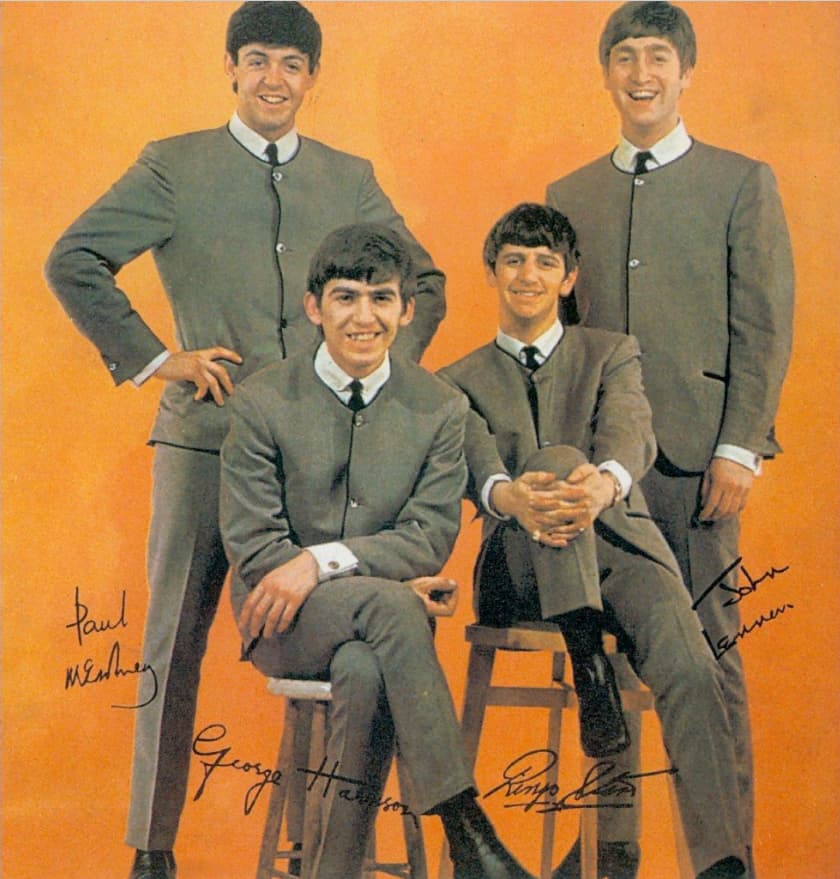
Echoes of Compromise: When Two Hearts Found Common Ground
This timeless gem from The Beatles, “We Can Work It Out,” released in the winter of 1965, offered a hopeful message of reconciliation and the enduring power of love to overcome disagreements, a sentiment that resonated deeply with a world undergoing its own tumultuous changes. Climbing swiftly to the top of the charts both in the United Kingdom and the United States, this double A-side single, shared with “Day Tripper,” cemented The Beatles’ continued reign over the popular music landscape.
The story behind “We Can Work It Out” is a fascinating glimpse into the collaborative genius of John Lennon and Paul McCartney. Unlike many of their earlier compositions where one primarily took the lead, this song represents a true partnership, a musical dialogue between two distinct perspectives. McCartney initiated the track, bringing in a more optimistic and pragmatic viewpoint, evident in the chorus’s reassuring declaration, “We can work it out.” His inspiration stemmed from a personal relationship facing challenges, a common experience that many listeners could undoubtedly relate to. The initial melody and the core message of finding a resolution bore his unmistakable touch.
However, Lennon’s contribution added a layer of complexity and a touch of his characteristic introspective edge. The middle eight section, with its slower tempo and more philosophical lyrics (“Life is very short, and there’s no time / For fussing and fighting, my friend”), is distinctly Lennon’s. It injects a sense of urgency and a broader perspective on the preciousness of time and the futility of prolonged conflict. This interplay between McCartney’s hopeful practicality and Lennon’s poignant reflection elevated the song beyond a simple pop tune, giving it a depth and emotional resonance that has allowed it to endure through the decades.
The meaning of “We Can Work It Out” is both personal and universal. On a personal level, it speaks to the challenges inherent in any close relationship, the inevitable disagreements that arise even between those who care deeply for one another. It champions the idea of compromise, of seeing the other person’s point of view, and of actively working towards a solution rather than allowing pride or stubbornness to prevail. The lyrics encourage open communication and a willingness to find common ground, a message that remains profoundly relevant in our often-polarized world.
Beyond the individual relationship, the song also seemed to tap into the broader social and political climate of the mid-1960s. The world was grappling with various tensions and conflicts, and the message of finding a way to work things out, of seeking understanding and resolution, resonated with a generation yearning for peace and progress. While not explicitly a protest song, its underlying theme of reconciliation offered a subtle yet powerful commentary on the importance of dialogue and cooperation.
Musically, “We Can Work It Out” was another step in The Beatles’ evolution. The use of a harmonium, played by John Lennon in the middle eight, added a distinctive and slightly melancholic texture to the song, further enhancing its emotional depth. The intricate vocal harmonies, a hallmark of The Beatles’ sound, were as captivating as ever, weaving together McCartney’s melodic lead with Lennon and George Harrison’s supportive voices. The song’s structure, with its contrasting sections and shifts in tempo, showcased their growing sophistication in songwriting and arrangement.
Released as a standalone single, not initially appearing on an album, “We Can Work It Out” later found its place on the American version of the “Rubber Soul” album, further solidifying its status as one of The Beatles’ most beloved and enduring tracks. It remains a testament to the power of collaboration, the complexities of relationships, and the timeless appeal of a message that encourages understanding and the enduring belief that, indeed, we can work it out. For those of us who remember the first time we heard its optimistic melody and thoughtful lyrics, it serves as a gentle reminder of a time when hope and the promise of a better future seemed to echo in every note.